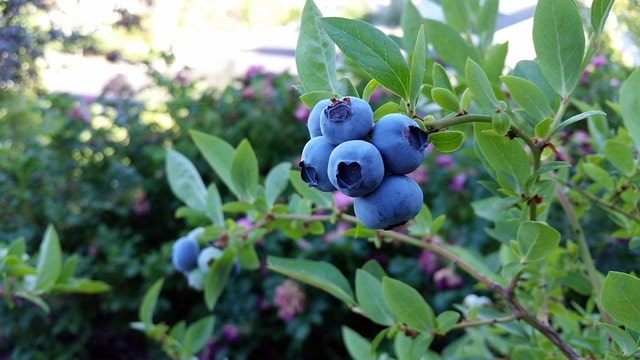Blueberry bushes not only produce wonderful fruit but also give the garden a charmingly eccentric touch. Blueberries make for a boldly nutritious snack or an ingredient for some flavorful recipes. When choosing blueberries for your garden, what you might not realize is that blueberries grow on a bush.
Picking the top 10 blueberry companion plants to grow around your bush will create the most incredibly diverse and captivating garden. These companion plants will bolster the healthy growth of your blueberries, while also helping to impede any potential threats to the flourishing of your berries.
Some of the companion plants listed below might surprise you, but give you an extensive choice for how you want to plan out your garden or the layout of your yard, since many of these plants are large.
Top 10 Blueberry Companion Plants
Picking what you plant near your blueberry bushes should be done carefully. There isn’t a long list of great companions for blueberries, but that shouldn’t deter you from growing this mouth-watering berry.
Similar posts:
1. Strawberries
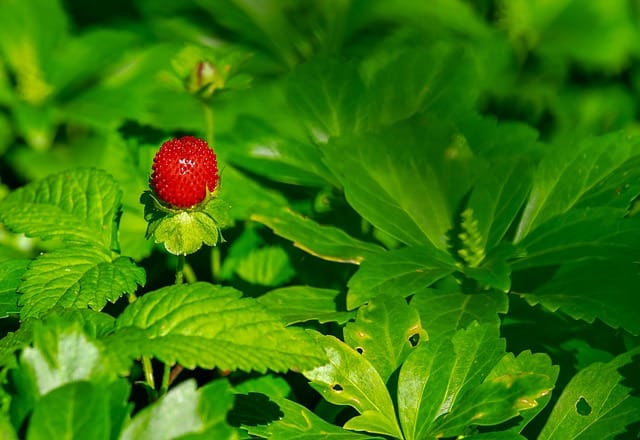
Strawberries help to cover the ground around blueberries, which helps deter any weeds from growing. They also make sure your blueberries get enough water to flourish.
Mature Size: Strawberry plants can vary pretty greatly in size at anywhere from four to 12 inches tall from the ground.
Flowering: Strawberries can be planted in the late spring; the best time is at the end of April.
Key Features: Strawberries grow in small bushes of green leaves inside the ground.
2. Cranberries
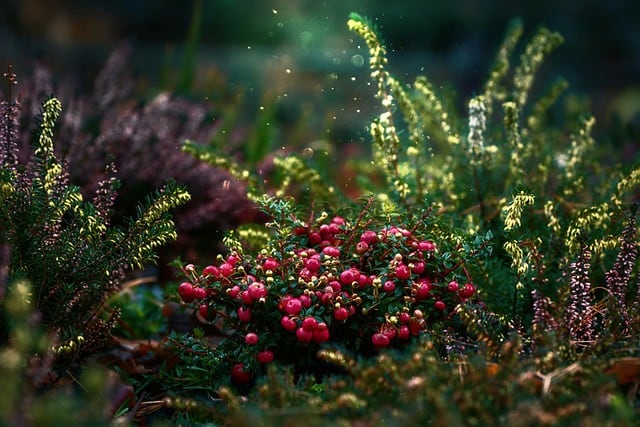
Cranberries work nicely with blueberries in a garden because they both like the same kind of soil. They also enjoy the same amount of sun and appreciate lots of water.
Mature Size: A cranberry tree can grow up to 18 inches tall when the cranberries are ready to harvest.
Flowering: Cranberries can be planted in the early spring, or when the final frost of the winter has dissipated.
Key Features: Cranberries are small red berries that grow on an evergreen tree.
3. Beans
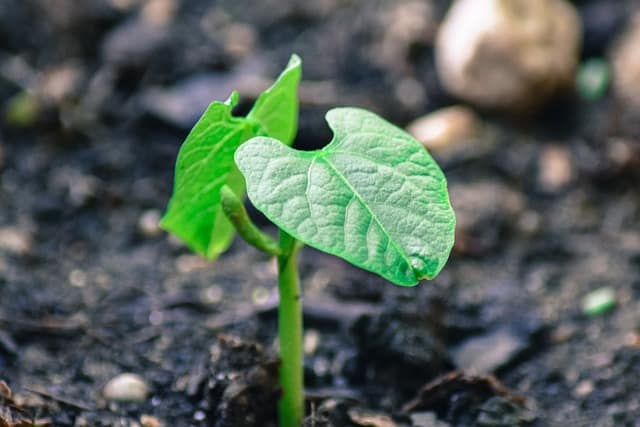
Even though beans can grow pretty substantially tall, they are still considered cover crops. This benefits your blueberry bushes because they make sure water stays in the soil and pesky bugs stay away from your fruit.
Mature Size: Beans can vary in maturity size, but they typically grow to be about four to eight inches long.
Flowering: Beans can be planted in the spring when the cold and frost is no longer in the ground.
Key Features: Bean plants grow on beanstalks, with multiple green beans emerging from stems with multiple leaves.
4. Rhododendron

The rhododendron likes all the same things that blueberries do and are fantastic pollinators, making them great friends. Acidic soil is required for both these plants to thrive in, as is a lot of sun.
Mature Size: A rhododendron continues to grow for many years, and is known to vary dramatically in size; some grow up to 20 feet tall.
Flowering: The best time to plant a rhododendron is in the spring.
Key Features: Leaves typically have a shiny, leathery look, and flowers can be shades of purple, pink or red.
5. Azaleas
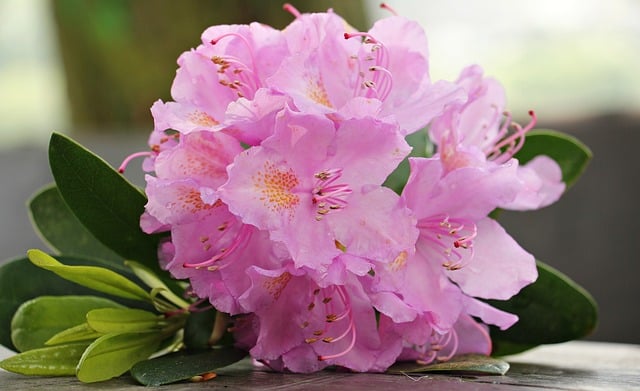
What you might not realize is that azaleas and blueberries belong to the same plant family. Azaleas will benefit from shade provided by blueberry bushes, while also bringing some much-appreciated pollinators to your berries.
Mature Size: Azaleas can either be dwarf varieties and grow to be around two or three feet tall, while others can become as tall as 20 feet.
Flowering: Azaleas like to be planted in cool temperatures of either spring or fall.
Key Features: Azaleas grow in bundles of richly colorful flowers, ranging from purples to pinks to reds, and the flowers usually have bell-shaped petals.
6. Thyme
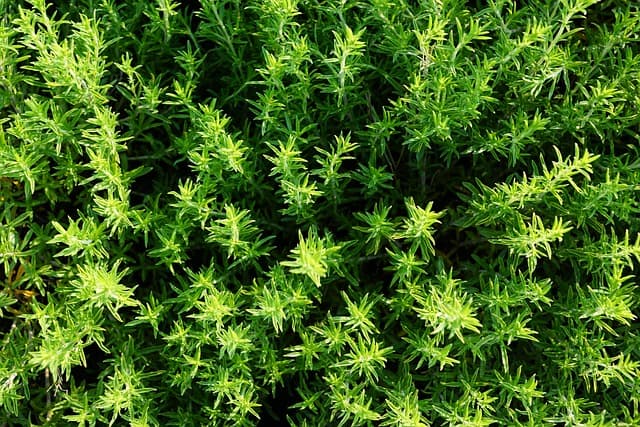
Thyme has a great aroma that helps keep pests away from your blueberries. It can also grow in the same soil conditions, actually improving soil conditions that are of great benefit to your berries.
Mature Size: The thyme plant can become anywhere from six to 12 inches tall when they’re mature.
Flowering: The perfect time to plant thyme is early in the spring after the last frost.
Key Features: Thyme is recognized for its unique and strong smell, and grows in stiff stalks with tiny green leaves.
7. Holly
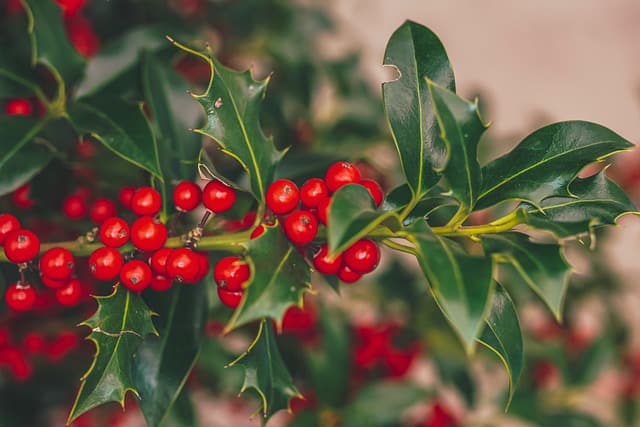
Holly is not just a nice decoration for Christmas, but they grow well alongside blueberry bushes. They grow low to the ground, helping retain moisture in the soil. Since holly doesn’t grow well with a lot of other plants, having these two together works well if you enjoy the beauty of holly.
Mature Size: A holly bush can grow to be monstrously tall; while many remain about six feet tall, some can grow up to 50 feet.
Flowering: The holly bush can be planted anywhere from the late fall, early winter, to the early spring depending on what type of holly you’re planning to plant.
Key Features: The holly bush has leathery green leaves with a series of points, and little red holly berries grow in small bundles on the bush.
8. Pine Trees
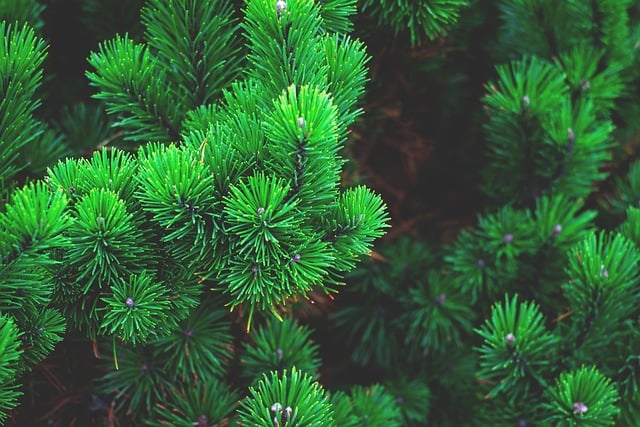
Pine trees give blueberries shade when needed, and help to keep the soil properly nourished and acidic for your blueberry bush’s optimal health. The pine needles that naturally fall into the soil also help keep it healthy and at the right levels for both the pine tree and your blueberries.
Mature Size: You can find dwarf varieties of pine trees that stay around four feet when mature, but other varieties can grow to be over 100 feet tall.
Flowering: You can either plant a pine tree early on in the spring, or wait until the beginning of fall.
Key Features: Pine trees have distinct needles that grow from its branches, and the needles are often green.
9. Heather
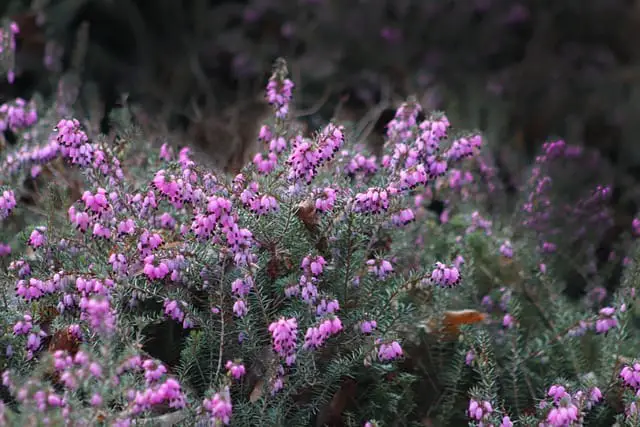
The stunning heather shrub attracts some pollinators to your garden, which your blueberries love. This shrub also creates a beautiful contrast of colors amidst blueberries.
Mature Size: The heather shrub can reach up to two feet tall when mature.
Flowering: If you miss planting your heather bush when it’s early in the spring season, you can also plant it in the fall.
Key Features: A heather bush grows a series of skinny branches with speckles of tiny purple petals growing up the branches.
10. Dogwood Shrubs
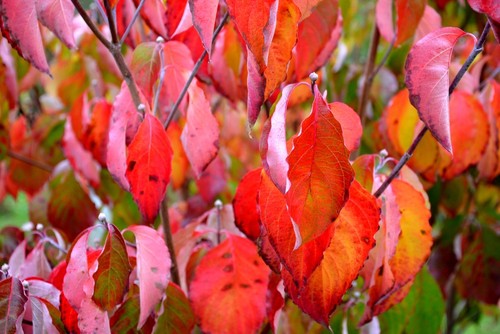
Dogwood shrubs are a great choice for your blueberries as they like the same growing parameters. Additionally, they look gorgeous next to a blueberry bush planted as a border or outside a garden.
Mature Size: Dogwood shrubs grow to be quite lush, and can reach up to ten feet tall and ten feet wide.
Flowering: This type of shrub can be planted in either the spring or early summer.
Key Features: Dogwood shrubs are plush with a gradient of white to green leaves, with some growing small white flowers, though there are many varieties that have green or red leaves.
Summary
As you can see, the top 10 blueberry companion plants range from big trees to plants with edible growths just like the blueberry bush. You get a good choice of edible and non-edible plants, but you’ll have your fill of blueberries regardless of which of the top plants you end up choosing.
With blueberry bushes, they can grow outside of a garden setting as hedges, as can many of their companion plants. While you might not have the largest variety of options, the choices you do have make for a brilliant landscape in your yard full of color and vibrance.
Frequently Asked Questions
What Can You Not Plant Next To Blueberries?
Unfortunately, there are quite a few plants that don’t grow well next to blueberries. Some of these include tomatoes, cabbages, peas, melons, dill, and lettuce. A lot of these plants don’t like living in the same kind of soil that blueberries do, so they’re not likely to grow to fruition.
Can You Plant Blueberries And Strawberries Next To Each Other?
Blueberries and strawberries grow very well next to each other, which is why it’s number one on our top 10 list of blueberry companion plants. Both berries grow again year after year when you take care of them, making them a great investment.
Where Is The Best Place To Plant Blueberry Bushes?
A blueberry bush works best in a place where it’s going to get a good amount of sun. As such, where you decide to put any trees you might want to grow next to it needs to be done very carefully, as you don’t want to block your blueberries from getting their rays.

Hey, I’m Lisa and I’ve been an avid gardener for over 30 years. I love writing, talking and living in the garden! Feel free to connect with me on my socials below

